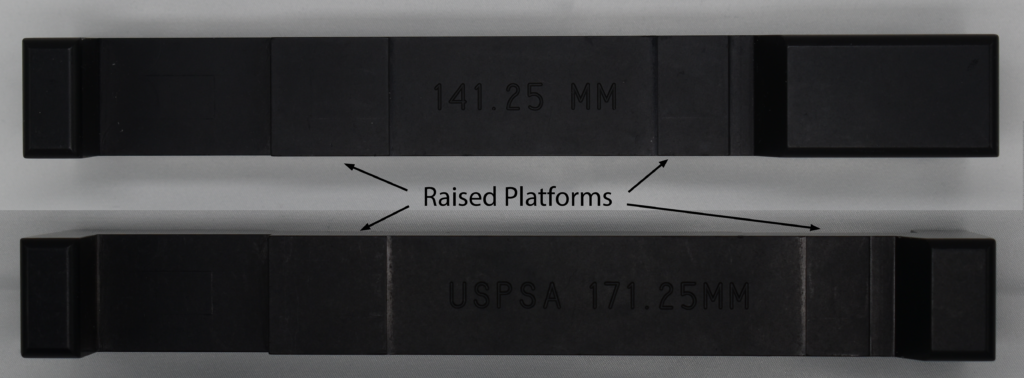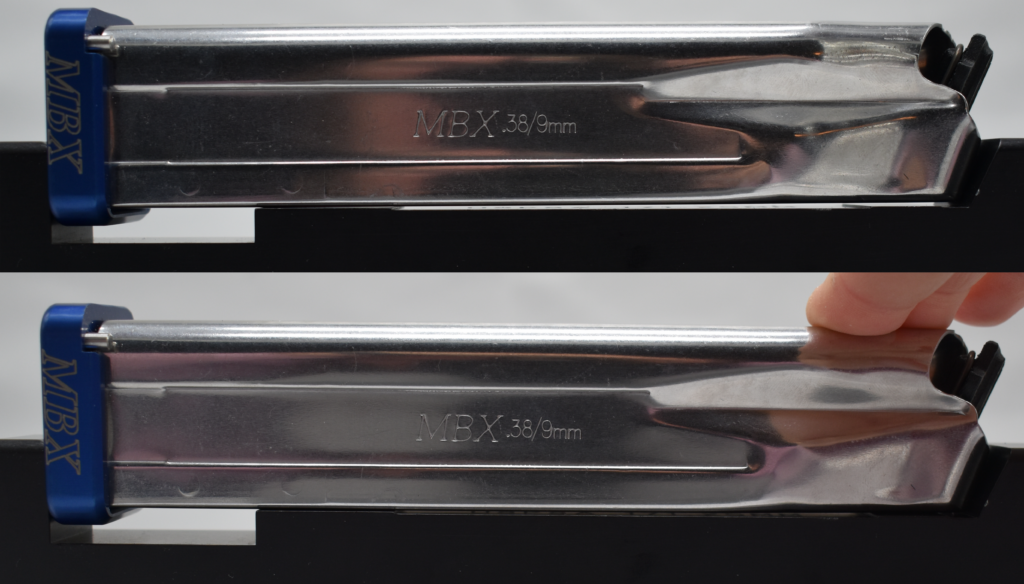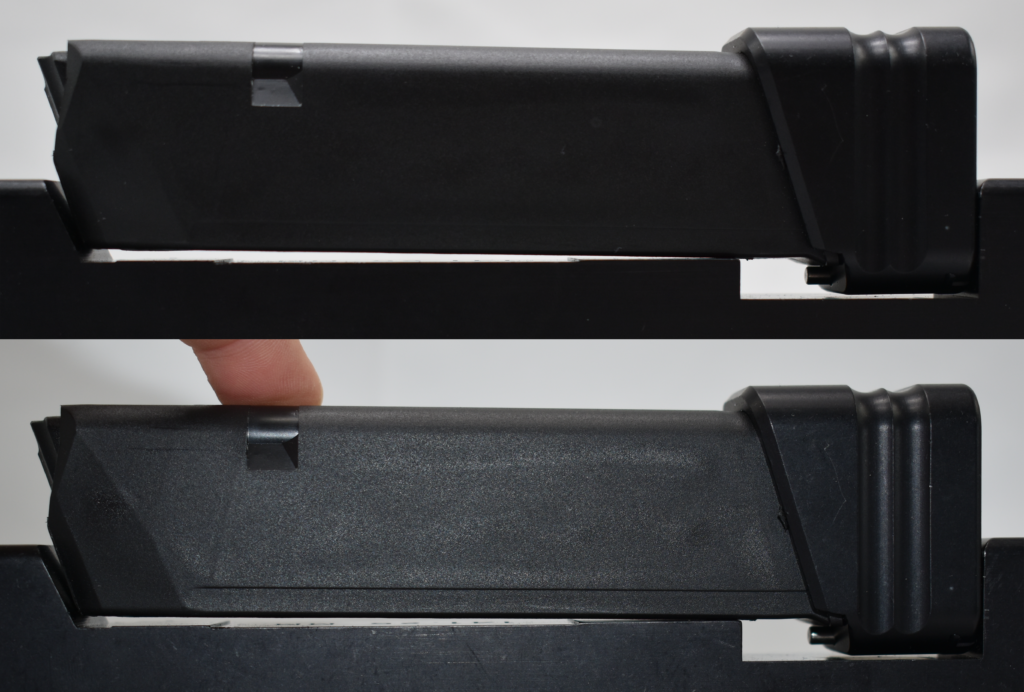It’s time for another reminder that magazine gauges are a cheap investment to ensure you have legal equipment and don’t end up shooting for no score or in Open Division with a non-Open gun at a major match. Let’s talk about magazine lengths and how to make sure your equipment is in compliance.
First, there is only one official USPSA magazine gauge and it is sold by Evolution Gun Works (EGW). I have linked to it and it is only $35. Quality 2011 magazines range in price from $110-170 each, and multiple magazines are needed. So when compared to the cost of the mags (and gun and match fees and travel costs and ammo), the mag gauge is a very affordable investment. There are a couple other mag gauges out there, but be aware that there is some variation between the brands and your mag may fit in those other brands, but not the official EGW gauge.
Which divisions is the mag gauge used for? Carry Optics, Limited, Limited Optics, and Limited-10 have a maximum magazine length of 141.25 mm. Additionally, if you shoot a single stack gun in Limited, Limited Optics, or Limited-10 gun you can use mags with a maximum length of 171.25 mm. Open has a mag length limit of 171.25 mm. One side of the EGW mag gauge is used to measure the 141.25 mm mags and the other side is for the 171.25 mm mags. So your $35 investment can be used for five different divisions!

The above picture shows both of the measurement sides of the gauge. You will see that each size is marked with the maximum length and there are two raised platforms on each surface. Your magazine needs to touch both those pads to be legal. And slight fingertip pressure can be used to help the mags touch the pads. The top panel below is the mag without pressure and the bottom panel is with fingertip pressure so this mag passes. Basically there needs to not be any daylight between the magazine and the raised pads.

While the above magazine passes, the magazine below does not pass even with finger pressure because the mag doesn’t touch both pads on the gauge.

And be aware if the mag extensions are wider than the notch cut on the gauge and prevent the back of the magazine from laying anywhere near the gauge, Appendix E1 shows how to measure a magazine with a ruler. If you are the Range Master for a match with chrono, make sure you have a good quality ruler in millimeters with appropriate increments to measure with.
I know some of you are saying that the magazine in the picture above isn’t giving the competitor any advantage as far as capacity, so why be so strict? The rules have a very clear definition of what is legal and what is not legal when it comes to magazine length. There is no gray area and there is nothing in the rules that allows for letting competitors compete in the declared division with magazines that are out of compliance.
Here are some other pointers to ensure your mags pass the gauge every time: 1.) Measure the mags when you first get them and make sure they are legal. If they aren’t don’t ever bring them to a match. 2.) When you take apart the mags to clean them, only have one mag apart at one time. Sometimes swapping a base pad onto a different tube results in a mag that is too long. 3.) Make sure you put the mag together properly. Yes, base pads put on backwards can also make mags too long. And adding grip tape to base pads does too. 4.) Double check everything with the mag gauge!
What are the consequences of mags that are the wrong length? If you are shooting Open Division and have mags that are too long, then you shoot for no score. If you are in any of the other four Divisions, you get bumped to Open Division. If you still think that a mag gauge is too pricey, get a group of friends together and purchase one to share or see if your club has one or will invest in one for club use. It can save your match!